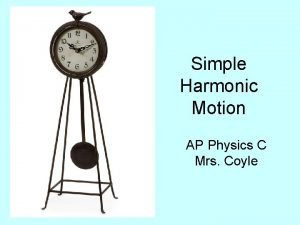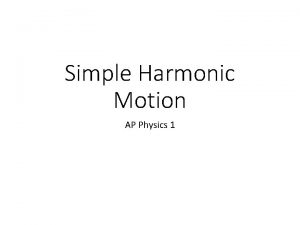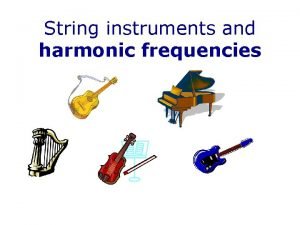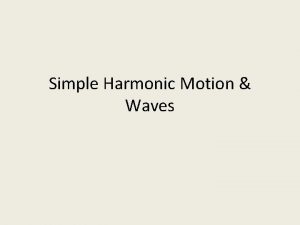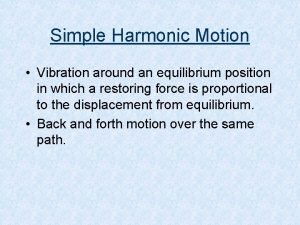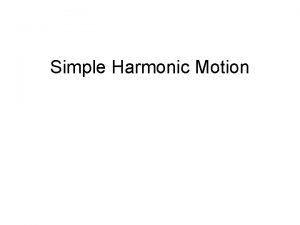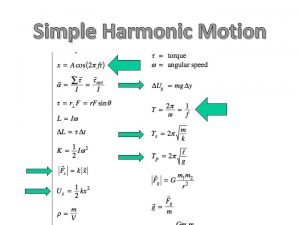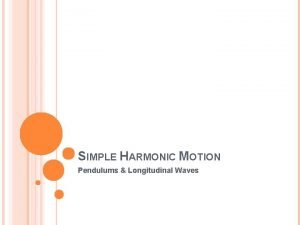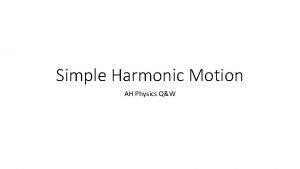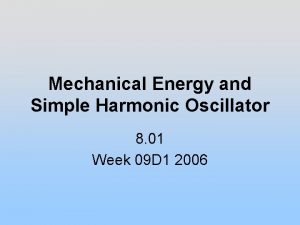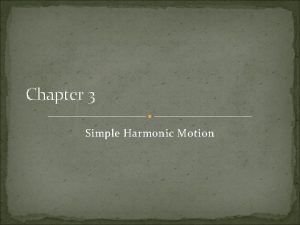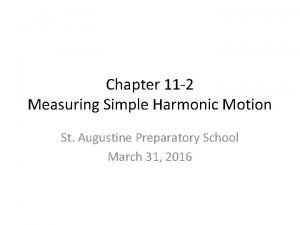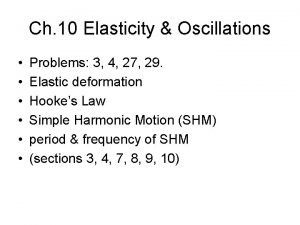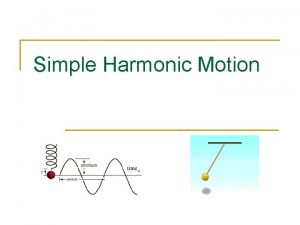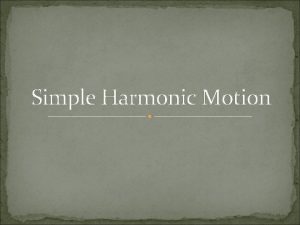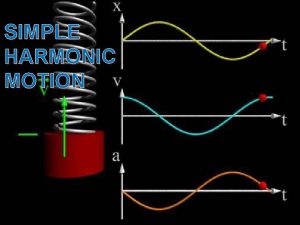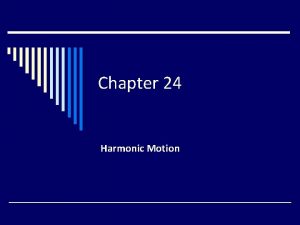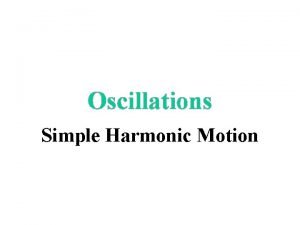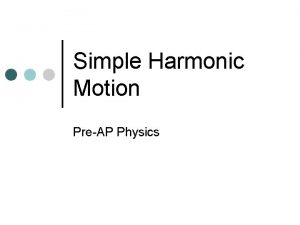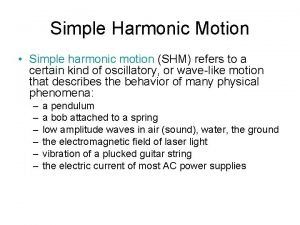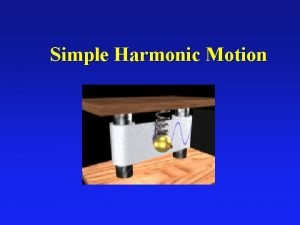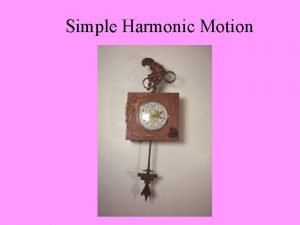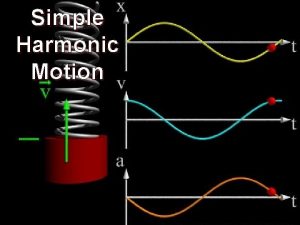Simple Harmonic Motion AP Physics What is periodic














- Slides: 14

Simple Harmonic Motion AP Physics

What is periodic motion? o Examples: n Mass on a spring n o Pendulum What do they both have in common?

Equilibrium and SHM o o o At equilibrium, net force is zero. The acceleration is also zero at equilibrium. Where does this happen for: n n n A pendulum? A mass on a spring? The graph on the right?

SHM is like Waves Crest Equilibrium Line The amplitude, A, of a wave is the same as the displacement , x, of a spring. Both are in meters. Trough Period, T, is the time for one revolution or in the case of springs the time for ONE COMPLETE oscillation (One crest and trough). Oscillations could also be called vibrations and cycles.

Simple Harmonic Motion o Back and forth motion that is caused by a force that is directly proportional to the displacement. The displacement centers around an equilibrium position. Also known as Periodic Motion. n n n o Pendulum Mass on a Spring Uniform Circular Motion Harmonic Oscillator: object undergoing harmonic motion

SHM and Uniform Circular Motion o o Springs and Waves behave very similar to objects that move in circles. The radius of the circle is symbolic of the displacement, x, of a spring or the amplitude, A, of a wave.

Simple Pendulum o A simple pendulum consists of a mass, called a bob, suspended by a string or rod of length L. n o String or rod is considered massless. The time to complete one full cycle is a period. o What is the period (T) of the pendulum in the room?

Equations: Pendulum and Mass on a Spring o Pendulum n n Mass does not effect the motion of the pendulum What does effect the motion of a pendulum? o o ‘g’ Length of pendulum o Mass on a Spring n n Gravity does not effect the motion of the mass on a spring system What does effect the motion of the mass on a spring? o o Mass Spring constant

Frequency and Period o Frequency (f) n n n The number of cycles completed in a period of time. Total cycles/total time Units: Hertz (Hz) Hz = 1/sec o Period (T) n n n The time to complete one cycle. Total time/total cycles Units: seconds

Damped Harmonic Motion o SHM n Motion is continuous. o DHM n n n Motion slows to a stop over time. The amplitude of motion decreases with time. Link to Harmonic Motion

Example: Energy and SHM o A 200 g mass is attached to a spring that undergoes simple harmonic motion with a frequency of 4 Hz. If the total energy of the system is 2. 0 J, find: 1. 2. The spring constant. The amplitude of the motion. 126. 3 N/m 0. 18 m

Combinations of Springs Parallel o o Stiffer system Add to get equivalent Series o o Less stiff system 1/K = 1/K + 1/K Two springs are combined. The spring constants of each are 100 N/kg and 200 N/kg, respectively. What is the equivalent spring constant when combined in series? in parallel?


Set-up
 Simple harmonic formula
Simple harmonic formula Simple harmonic motion ap physics 1
Simple harmonic motion ap physics 1 Shm equations physics
Shm equations physics First harmonic and second harmonic
First harmonic and second harmonic Simple harmonic motion vocabulary
Simple harmonic motion vocabulary Equilibrium position of a wave
Equilibrium position of a wave Simple harmonic motion springs
Simple harmonic motion springs Shm reference circle
Shm reference circle Simple harmonic motion formula
Simple harmonic motion formula Harmoninic ah
Harmoninic ah What is shm
What is shm Simple harmonic oscillator
Simple harmonic oscillator Simple harmonic motion
Simple harmonic motion Measuring simple harmonic motion
Measuring simple harmonic motion Frequency in simple harmonic motion
Frequency in simple harmonic motion
